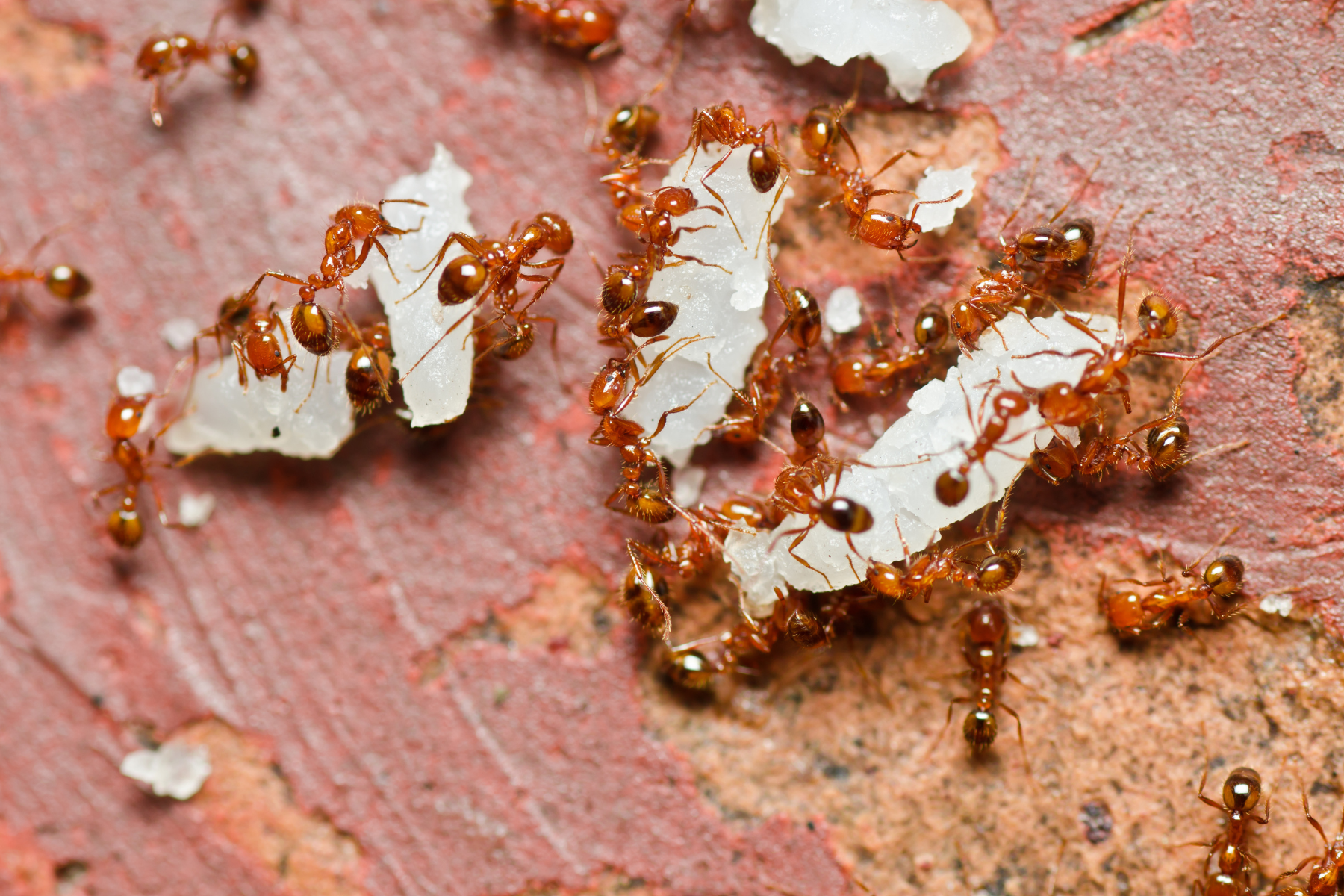The roof rats are also known as black rats, and sometimes they are referred to as ship rats. They are becoming a headache for many households in Tempe. Opposite to their Norway rat cousins, who like burrowing, they are experts in climbing. That’s how they acquired their name. They like to nest in attics, trees, and wall voids. The warm climate of Tempe has made it ideal for roof rats. The abundance of citrus trees is a good source of food for them. Most of all, the populated suburban homes are like a shelter for them.
In this article, we’ll discuss how you can identify roof rats. What signs to look out for? The risks they pose to your property and health. And the best solutions for getting rid of them and preventing future infestations.
What Are Roof Rats?
Physical Characteristics
Roof rats are about 13-18 inches measuring from nose to tail. They have a sleek and slender body. Roof rats are dark brown to black with a lighter underbelly. Their ears are large, and their long tails are longer than their bodies.
Behavior and Nesting Habits
Roof rats are quite the opposite of Norway rats. They don’t like the underground, they prefer it above. Mostly, they are found in attics, rafters, trees, and dense vines. These creatures are nocturnal, and they move quickly. They can either jump or climb onto roofs, utility lines, or branches.
Roof Rats vs. Norway Rats
- Size: Roof rats are slimmer and lighter.
- Tail: Roof rats have longer tails.
- Nesting: Roof rats nest high; Norway rats burrow underground.
- Color: Roof rats are darker and more uniform in color.
Why Tempe Homes Are Vulnerable
Warm Climate and Dense Housing
Tempe’s mild winters allow roof rats to breed year-round, especially in neighborhoods with close-packed homes and little separation between rooftops.
Citrus Trees and Landscaping
Roof rats are highly attracted to citrus and other fruit trees. Fallen fruit and dense foliage give them both food and hiding places. Once established in trees, it’s a short jump to nearby roofs.
Holes in the attic and roof
If your roofs have holes or eaves, they can be an easy path for these tiny climbers. Not only that but also other kinds of pests can enter through the openings.
Signs of Roof Rats in Your Home
1. Scratching Noises in the Attic
It’s to identify the activity of roof rats. Just by hearing a sprinting or scratching noise, you can tell. Especially if it’s coming from your attic or ceiling, they are possibly nesting above.
2. Droppings
Roof rat droppings are spindle-shaped, about ½ inch long with pointed ends. They are usually found near insulation, attic beams, or along baseboards.
3. Gnaw Marks and Chewed Wires
They like to constantly chew to stop their incisors from growing too long. That’s why they gnaw on hard surfaces like electrical wiring, tin insulation, or wooden rafters.
4. Grease Smudges
Rats leave greasy marks on surfaces where their oily fur rubs against walls, pipes, and beams.
5. Nesting Material
Shredded paper, insulation, fabric, or leaves gathered in hidden areas of your attic or garage are strong indicators of nesting activity.
Dangers of Roof Rat Infestations
Health Risks
Roof rats can carry dangerous pathogens and diseases such as:
- Hantavirus
- Leptospirosis
- Salmonella
- Rat-bite fever
Fire Hazards
Chewed wires can lead to short circuits or electrical fires, especially when rats infest attics filled with insulation.
Structural Damage
Rats can destroy your roofing materials, ducts, and insulation. They can also destroy drywall to build nests and find food sources.
How to Get Rid of Roof Rats in Tempe
Seal All Entry Points
Conduct a thorough inspection and close off any access points:
- Use steel mesh over attic vents and roof openings.
- Repair cracked roof tiles and soffits.
- Seal around utility lines and pipes entering your home.
Eliminate Food Sources
- Pick up fallen fruit promptly.
- Store pet food and birdseed in sealed containers.
- Use metal garbage cans with tight lids.
- Avoid leaving dog or cat food outside overnight.
Trapping Methods
- Snap Traps: Effective for quick control. Place along suspected travel routes.
- Electronic Traps: Humane and clean disposal.
- Live Traps: For relocation, but less common in residential control.
Avoid poison baits unless used by a professional. Poisoned rats can die in inaccessible places, creating odor and secondary pest issues.
Call a Professional Pest Control Company
Roof rat infestations often require experienced pest management professionals. Local experts can:
- Conduct full attic and perimeter inspections
- Set up exclusion barriers
- Use integrated pest management (IPM) solutions
- Provide monthly monitoring or treatment plans
Preventive Measures for Roof Rats
- Trim Back Trees and Shrubs: Cut tree limbs at least 3 feet from the roof. Remove thick vines or overgrown hedges touching your home.
- Cover Vents and Openings: Install galvanized steel mesh over attic vents, gable vents, and chimney openings.
- Keep the Roofline Clean: Clear leaves, palm fronds, and fruit debris from your roof and gutters to eliminate hiding spots and nesting material.
- Routine Inspections: Inspect your attic, garage, and roof areas at least once per season for signs of rodents. Pay close attention during fall and winter when rats seek warmth.
Tempe roof rats: They’re not house guests you want to keep. Get expert eviction services!
Worried about those rats in your attic? We get it. It’s more than just the holes they created in the walls. It’s about the disturbing noise they make. And the fact that your home has a pest infestation. You deserve to feel safe and comfortable.
We’re experts at getting rid of roof rats. We’ll work with you to make sure they’re gone for good. We’ll fix the problem and stop them from coming back. Let’s team up to make your home a safe and pest-free place for you and your family. Call us today for a free chat. Let’s get this sorted!
Frequently Asked Questions (FAQs)
1. What attracts roof rats to homes in Tempe?
Roof rats are drawn to homes in Tempe due to warm weather, abundant fruit trees (especially citrus), accessible food sources, and unsealed attic or roofline openings.
2. How can I tell if I have roof rats or regular rats?
Roof rats are slimmer, darker, and have longer tails than Norway rats. They prefer nesting above ground in attics or trees, while Norway rats burrow underground.
3. Are roof rats dangerous to my health?
Yes. Roof rats can carry diseases like Salmonella, Leptospirosis, and Hantavirus. Their droppings and urine can contaminate surfaces and air quality.
4. What’s the best way to get rid of roof rats in Tempe?
Seal all entry points, remove food and water sources, set traps in attics and roof areas, and consult a professional pest control company for long-term prevention.
5. Do roof rats only infest older homes?
No. While older homes may have more gaps or unsealed vents, even new constructions in Tempe can experience roof rat infestations due to nearby landscaping or fruit trees.
6. Can roof rats chew through my electrical wiring?
Absolutely. Roof rats frequently chew on wires, which can lead to electrical malfunctions or even fire hazards if left unchecked.
7. How do I prevent roof rats from climbing onto my roof?
Trim tree limbs at least 3 feet away from your home, remove climbing vines, and install rodent guards on utility lines if necessary.
8. What are roof rat droppings supposed to look like?
Roof rat droppings are about ½ inch long, spindle-shaped, and have pointed ends, commonly found near attics, rafters, or along wall edges.
9. When are roof rats most active in Tempe?
Roof rats are nocturnal and typically more active during cooler months (fall and winter), when they seek warm nesting sites indoors.
10. Should I call a pest control professional for roof rats?
Yes. DIY methods can help, but professional pest control ensures a thorough inspection, effective extermination, and long-term prevention of future infestations.




